
The year of 2019 marks the 25th anniversary of Waliguan Baseline Observatory. This observatory has covered a phenomenal journey and made contributions to meteorological observation of China, and even the world at large.
In Qinghai-Tibet Plateau with the average altitude exceeding 4000 meters, Waliguan Mountain with the altitude of 3816 meters is not reckoned very magnificent. 25 years ago, because of the construction of Waliguan Baseline Observatory, Waliguan has become the limelight. It also marks that China has made an important step in conserving our Earth.
Back in November, 1989, a group of young meteorological team members erected tents, laid out instruments, carried out meteorological observation and accumulated original data in Waliguan devoid of electricity and road, and laid the groundwork for applying for the construction of the first baseline observatory in China and even Eurasia. In 1991, Zhou Xiuji, then Director of Chinese Academy of Meteorological Sciences (CAMS) led a batch of scientific research workers to stand at the summit of Waliguan and conducted field trips in the planned baseline observatory.
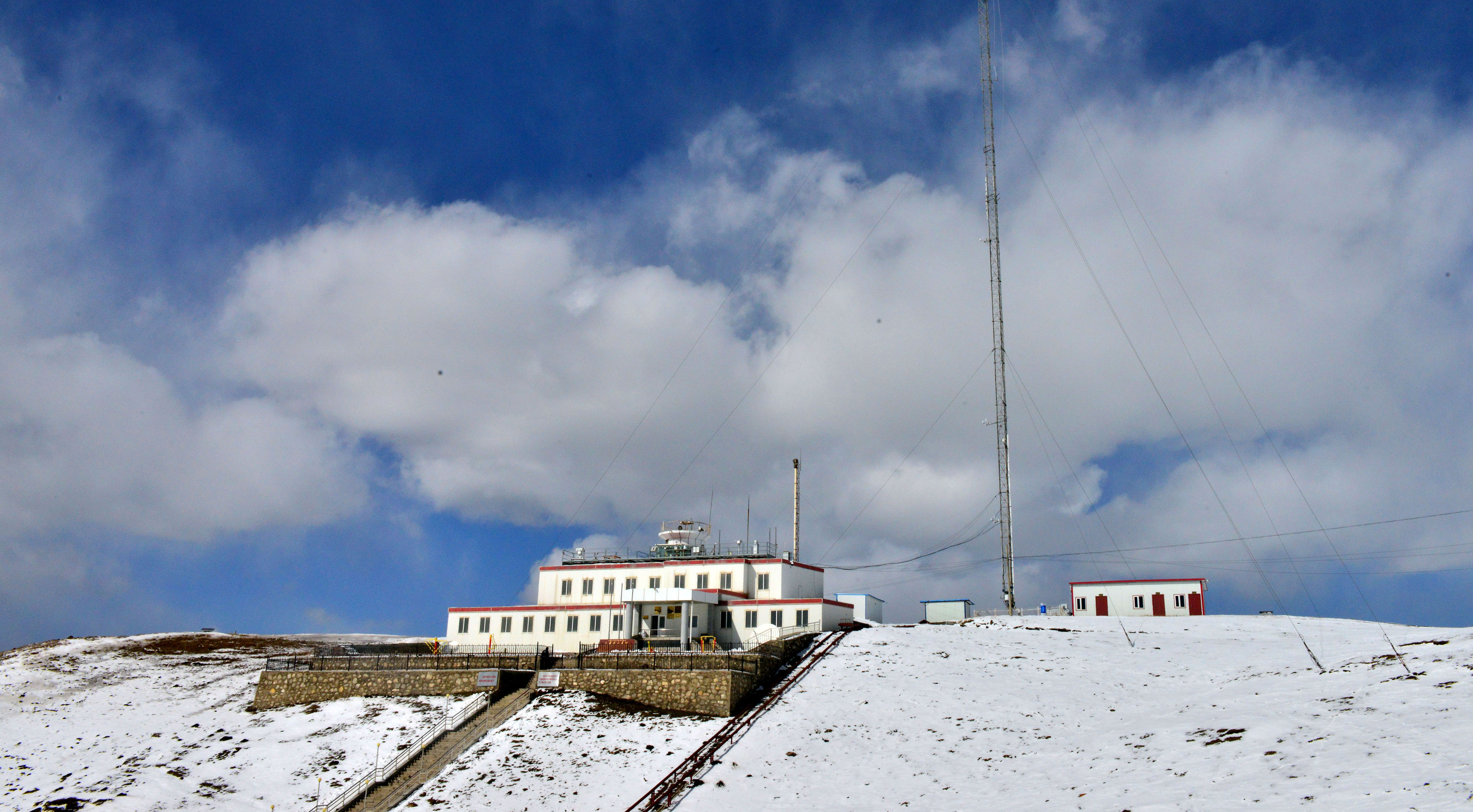
Waliguan Baseline Observatory at the altitude of 3816 meters
At that time, World Meteorological Organization (WMO) global atmospheric observing system barely completed its integration, and IPCC report would soon come out. Against the backdrop of the rising trend of global carbon dioxide concentration which could not be neglected, various localities like North Pole and South Pole have set up baseline observatories in succession. However, atmospheric background baseline observation in Eurasia remained blank, and available data from observatories could not represent the authentic conditions of the global climate change.
A baseline observatory in inland plateau of China was proposed and this won positive responses right away.
According to the then state Councilor Mr. Song Jian, on behalf of then premier Li Peng, during WMO conference on climate change, environment, and development in 1992, China was cooperating with WMO, the United Nations Development Programme, and the United Nations Environment Programme in setting up the first inland global atmospheric background baseline observatory. And its establishment would be instrumental in the global atmospheric observing undertaking.

Distribution diagram of WMO global atmospheric background monitoring network
On September 15, 1994, the highest altitude ozone and greenhouse gases monitoring observatory was put into operation in China. On September 17 that year, this observatory was officially founded, which filled up the vacancies of WMO global atmospheric background observatories in China and Eurasia.
Although in its inception, China began to gain the say in terms of fields like global atmospheric background baseline observation and greenhouse gases observation.
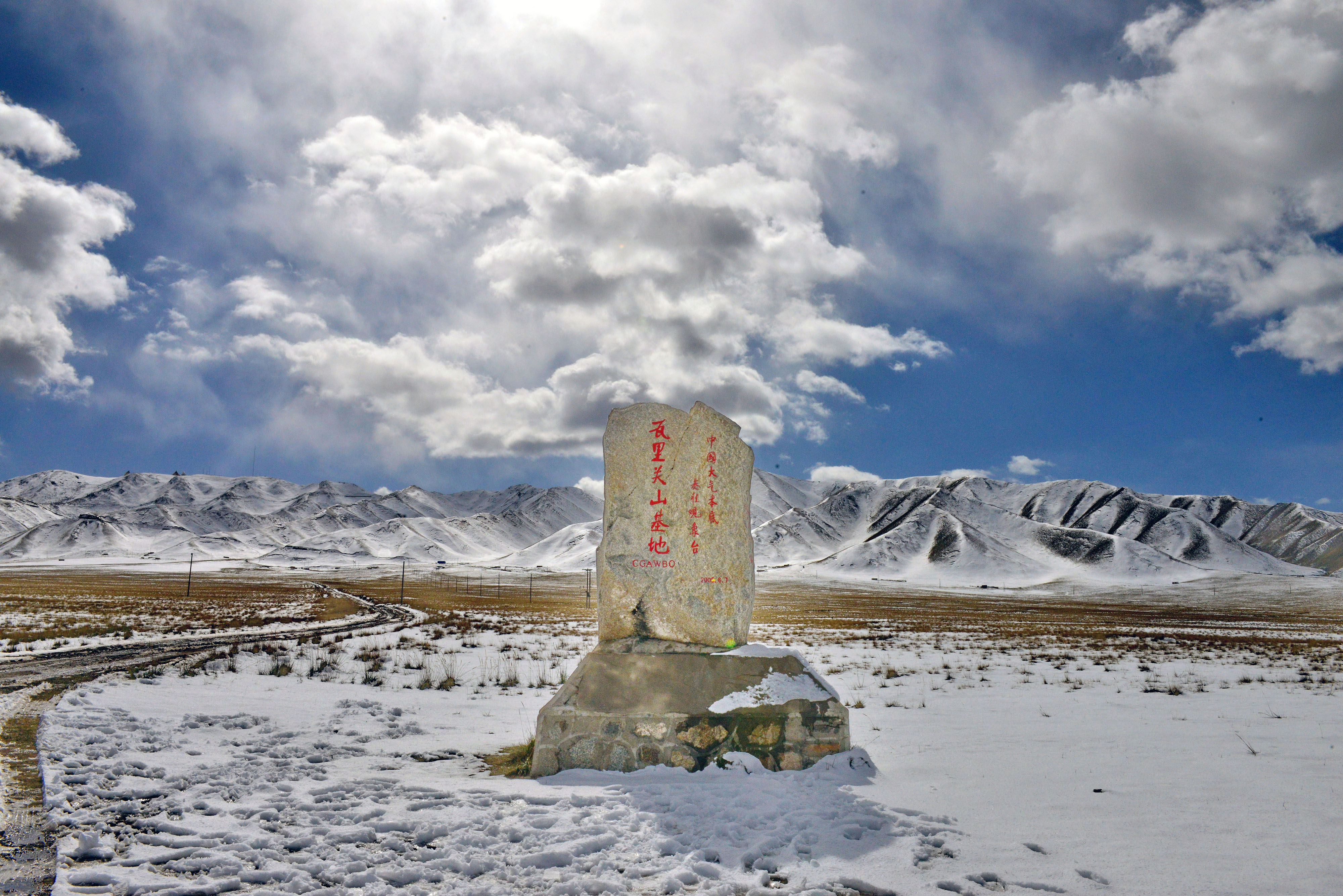
Waliguan Baseline Observatory after the snow
25 years is in the blink of the eye. And this observatory is exuding its glamor and playing a bigger role.
With the support of WMO, China Meteorological Administration (CMA), and relevant departments, and the joint efforts of batches of meteorological scientific staff, this observatory has grown stronger and made remarkable contributions in terms of fundamental observation, scientific research, and the response to climate change.
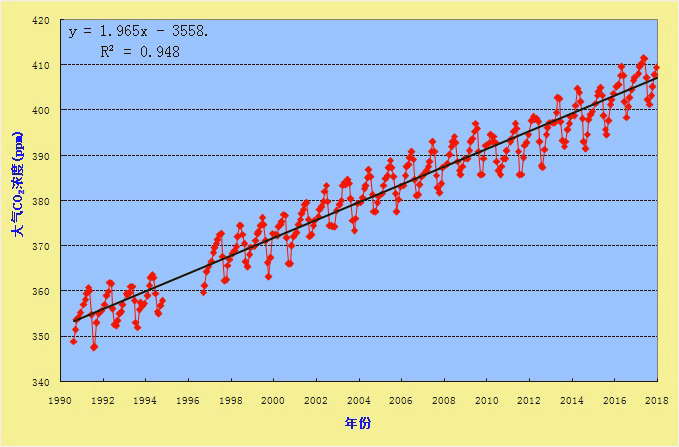
Historical curve of atmospheric carbon dioxide concentration in Waliguan
Data processing centers and instrument quality control centers in the world receive and process data obtained by the observatory, which have played an instrumental role in research and assessment of climate change.
After 25 years’ construction and improvement, currently, this observatory has realized all-weather and highly intensive observation of 60 factors of 30 projects like greenhouse gases, solar radiation, radioactive matter, black carbon, precipitation chemistry, and atmospheric physics; produced over 60 thousand data; basically realized the observation technical system covering atmospheric background components.
Over the years, batches of meteorological practitioners have made strenuous efforts in fundamental observation and long-time sequence greenhouse gases observation data. They have drawn the carbon dioxide changing curve with observation data of the observatory.
Greenhouse gases observation of this background baseline observatory is an important data support for the United Nations Framework Convention on Climate Change (UNFCCC). The observation data not only serve China Bulletin of Greenhouse Gases but also serve as precious greenhouse gases data of China in global climate change conference. These observation data have entered World Data Centre for Greenhouse Gases and global database, which are used for WMO Greenhouse Gas Bulletin and multiple scientific assessments of WMO, the United Nations Environment Programme and IPCC.
Since its construction, this observatory has assisted international organizations and relevant national scientific research institutions in completing over 30 scientific experimental projects. According to statistics, the number of scientific papers adopting the observation data of this observatory exceeds 180.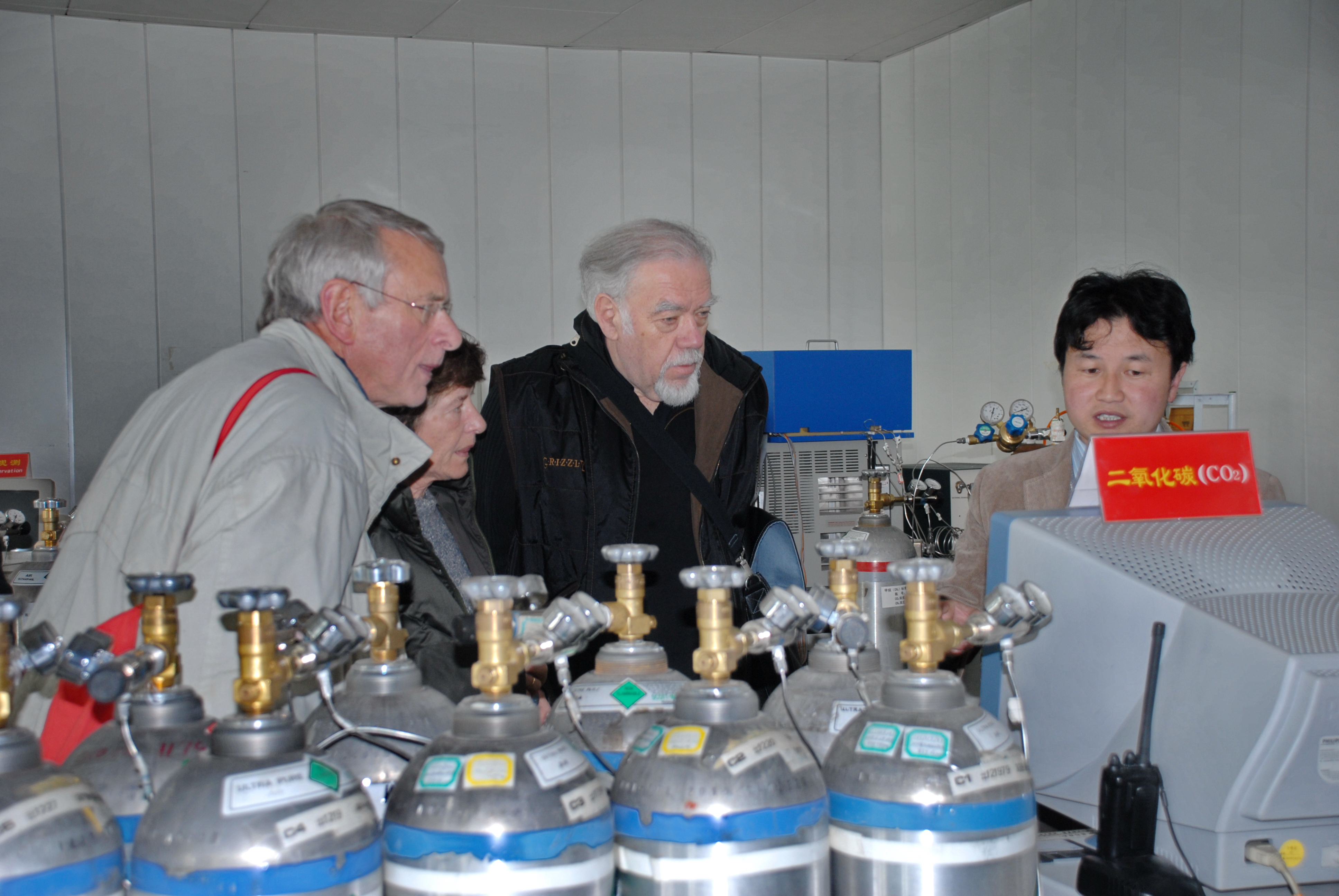
图 German meteorologists paid visits to the observatory in 2018
The observatory has dispatched 6 experts to further their studies in Canada, Australia, and Germany. 7 experts have been selected to participate in Antarctica scientific expedition. It has become a meteorological talent incubation and cultivation base for Antarctic scientific expedition of China.
In 2006, the observatory was listed as national field scientific observation experimental observatory of the Ministry of Science and Technology. In 2018, the observatory field experimental base was shortlisted into the first batch of field scientific experimental base of CMA.
For greenhouse gases baseline concentration observation, Waliguan is a fit. But for human beings, 3816 meters signifies a place riddled with challenges.
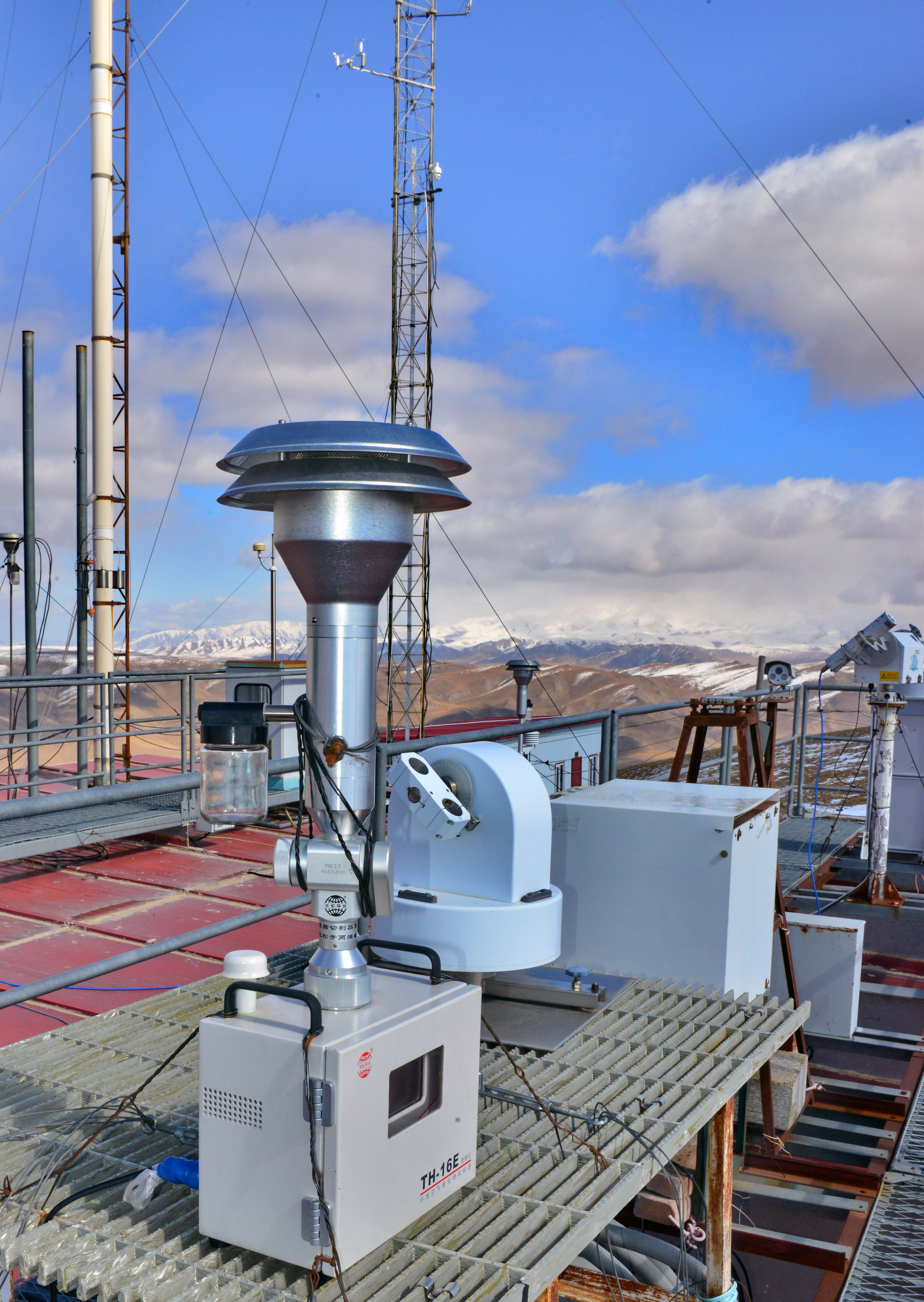
图 All kinds of sophisticated observation instruments of the observatory
There is an 80-meter gradient observation tower on the outside, which has heavy maintenance task in the face of inclement weather. The observation staff have to do a lot of work to ensure the smooth operation of observation.
Facilities used by the observation are mainly high accuracy optical instruments. They are deployed from various countries by WMO and vary a lot in terms of instrument performance, principle, and software system. Some instruments have complex operational procedures, and rigid calibration and debugging procedures. Relevant personnel strengthen learning, master the use approach of instruments and facilities, and complete observation operation dutifully.
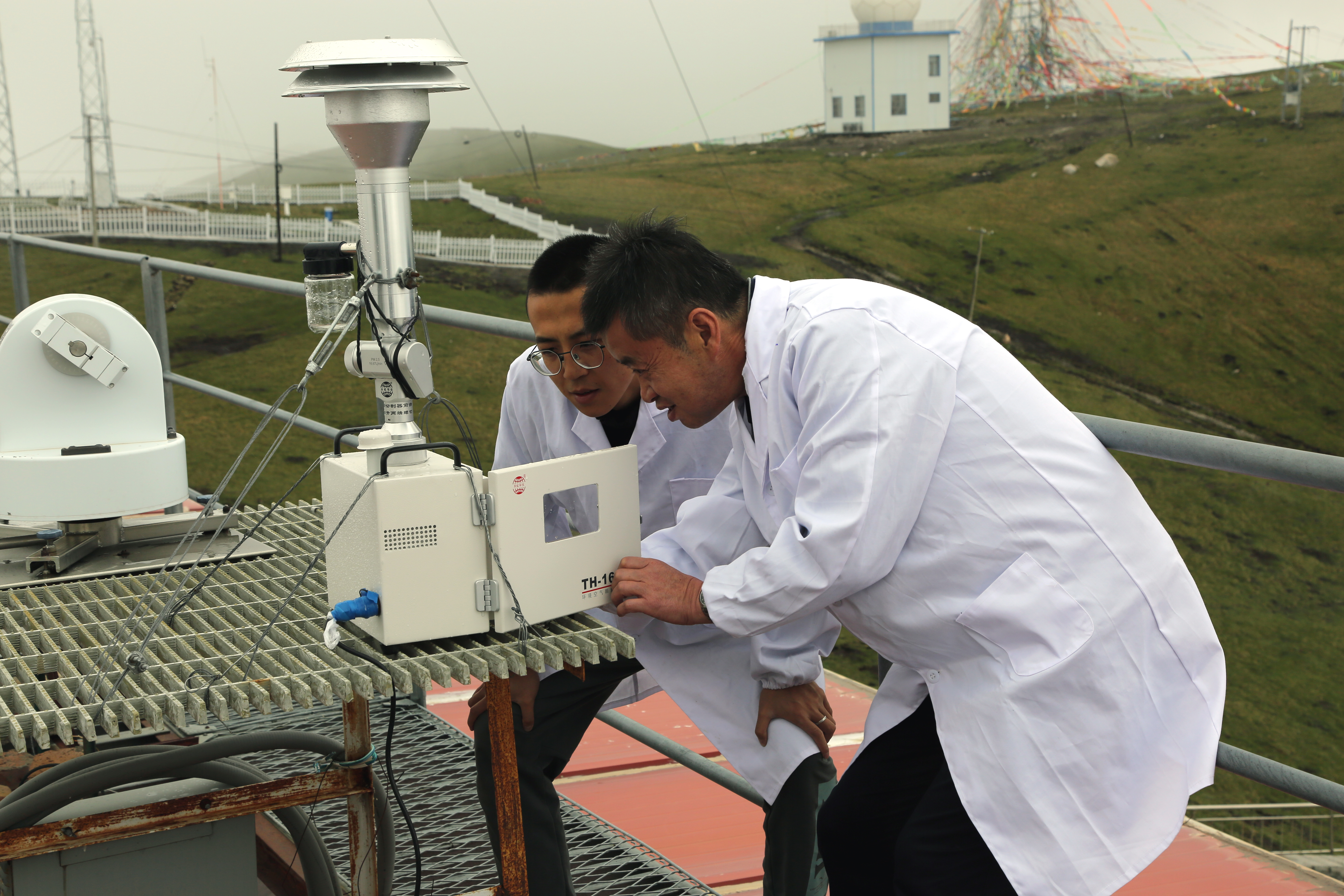
Meteorological staff are checking the instruments
Using sophisticated instruments in high altitude regions are prone to high failure rate. Through many years’ efforts, workers of this observatory have summarized a set of approaches of adjusting and maintaining instruments and trouble clearing, and formed an operational and management technical system.
Looking into the future, a more splendid and spectacular blueprint has been depicted. The observatory will further exude its glamor and played its instrumental role, making a new milestone in atmospheric monitoring operation.
Editor: Liu Shuqiao